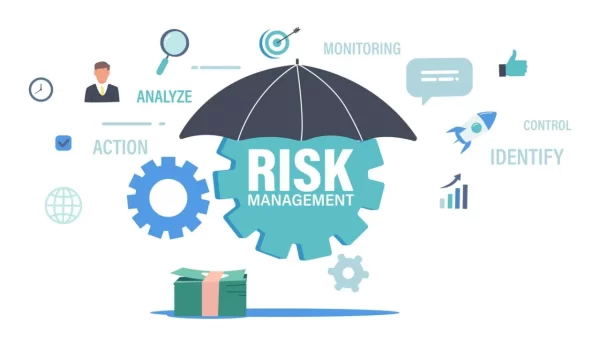Your company can’t avoid all risks. Sure, you can dodge some of them. But your business needs a plan to meet its threats head-on and mitigate them as much as possible. While it would be nice to avert every hazard in your way, this type of thinking is far from realistic.
Consequently, a risk management plan is something many organizations couldn’t live without. Yet having a strategy on paper and prioritizing it through tangible actions aren’t the same thing. When risk management is front and center, it becomes every employee’s responsibility and permeates to the simplest of tasks. How can your company do the same? Let’s look at some ways to prioritize risk management to protect your business and people.
Approach Risks Holistically
Companies are more likely to run into trouble when leaders don’t view risk management systemically. Instead, employees attempt to manage threats from siloed perspectives. They fail to realize how each department’s actions or inactions impact the business as a whole.
Take the insurance industry as an example. While insurance providers typically absorb risks for others, they must also manage their own internal and external threats. A few of these relate to compliance, as each state has regulations regarding claim payouts. In addition, attorneys representing claimants can heighten risk with attempts to gain larger settlements for their clients.
Employees’ misguided actions and errors could open up insurance carriers to more unintended consequences. But human mistakes are almost a given, driving the need for strong enough guardrails for each set of stakeholders. Integrating threat mitigation into a governance, risk, and compliance program provides those guardrails. GRC compliance plans treat hazards as systemic issues.
Furthermore, integrated programs recognize the role technology can play. Using a GRC tool, leaders can see how various business functions and operating environments can pose threats. Addressing these threats may include investing in improved analysis tools, ongoing training, and additional employee resources. Simultaneously, it might involve business decisions to pull out of riskier environments.
Assemble a Dedicated Team
Businesses usually deal with four types of risk. You can categorize your company’s potential threats into compliance, operational, strategic, and reputational risks. If this already sounds mind-boggling, it is. Each of these areas presents unique, convoluted challenges. And it’s not unusual for missteps in one category to impact another.
The sheer task of identifying and addressing threats in each area is a full-time job. That’s why having a dedicated risk management team sets a company up for success. The group doesn’t have to be large, but it should include subject matter experts and members of executive leadership. Since executives have the overview and power to bring about systemic change, they’re better poised to advocate for mitigation.
With a dedicated team, it’s not as easy to place risk management on the back burner. Each group member might identify threats in their respective areas, such as brand reputation and org strategy. When the team comes together to report what risks exist and how to address them, they’re difficult to dismiss. The reality of the situation sinks in, and plans for shared accountability are less daunting to create.
Rank Each Threat
Businesses have limited resources, including time. While mitigating all risks may be important, your team can’t devote energy to everything at once. Various threats will have different potential impacts, ranging from mission-critical to negligible. By ranking risks according to severity, you can direct the appropriate level of resources toward mitigation.
A risk assessment matrix is one tool organizations use to rank threats by impact and probability. The greater the impact and likelihood, the higher the priority. Placing different threats into the matrix’s categories reveals what threats businesses should prioritize.
For example, the risk of shoplifting may be moderate for a company with a few retail stores. It’s likely to occur but has marginal impacts. On the other hand, a data breach compromising customer information may be a high risk. This threat is both likely to happen and have critical effects. As a result, more resources should go toward preventing data breaches than shoplifting.
Have a Monitoring Plan
What happens when you vow to work out five times a week and improve your eating habits? You usually start with a gung-ho attitude and meet your daily goals. But as time goes on, you begin to let things slide. You might make excuses like being too worn out to make it to the gym. Maybe you think one extra slice of pizza won’t hurt.
Now it’s two months later, and you’ve sabotaged your plans. You’re off track and don’t know whether you can get back on. Risk management programs can turn out the same way without continuous monitoring. Think of ongoing monitoring as an app that keeps track of your daily physical activities and calories. It shows how you’re progressing overall, even though you’re sometimes on and sometimes off target.
What matters is whether you’re headed toward your goals and whether you can stop deviations from derailing the company. Ongoing monitoring also identifies emerging and evolving risks. It reveals what’s up ahead so everyone can proactively manage the business’s threats. Rather than being caught off guard, all employees see the same reality and can devise ways to avoid disaster.
Making Risk Management a Priority
You can’t mitigate risks without implementing powerful action plans and tools. Treating risk management as an enterprise-level activity brings it out of the shadows and helps reduce information silos. By involving multiple stakeholders, your company can improve how it identifies, monitors, ranks, and — most importantly — addresses each threat.

